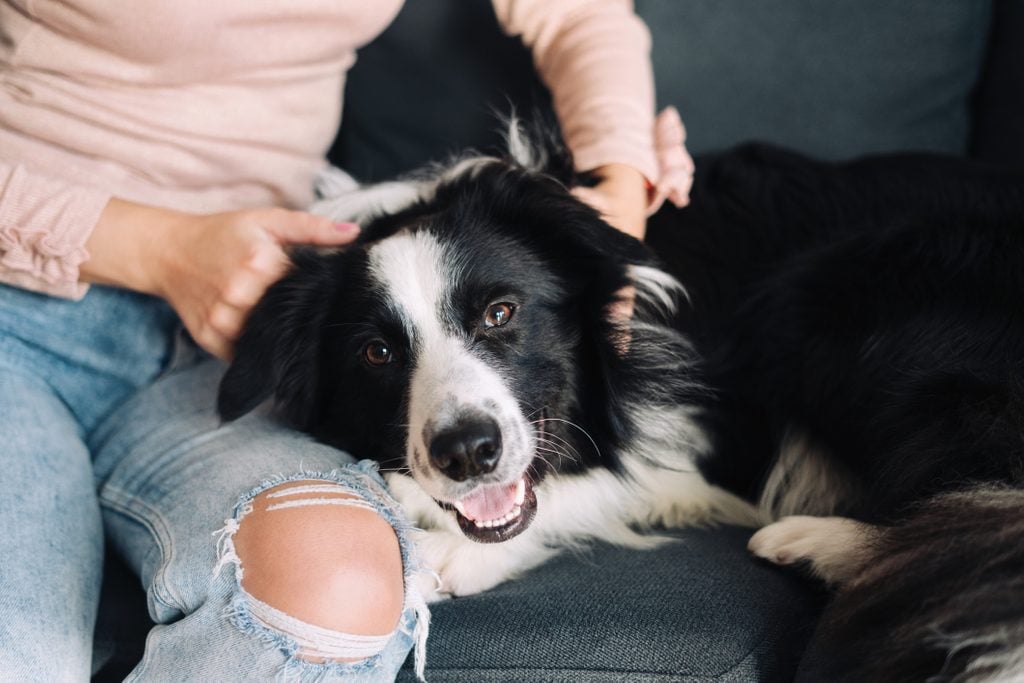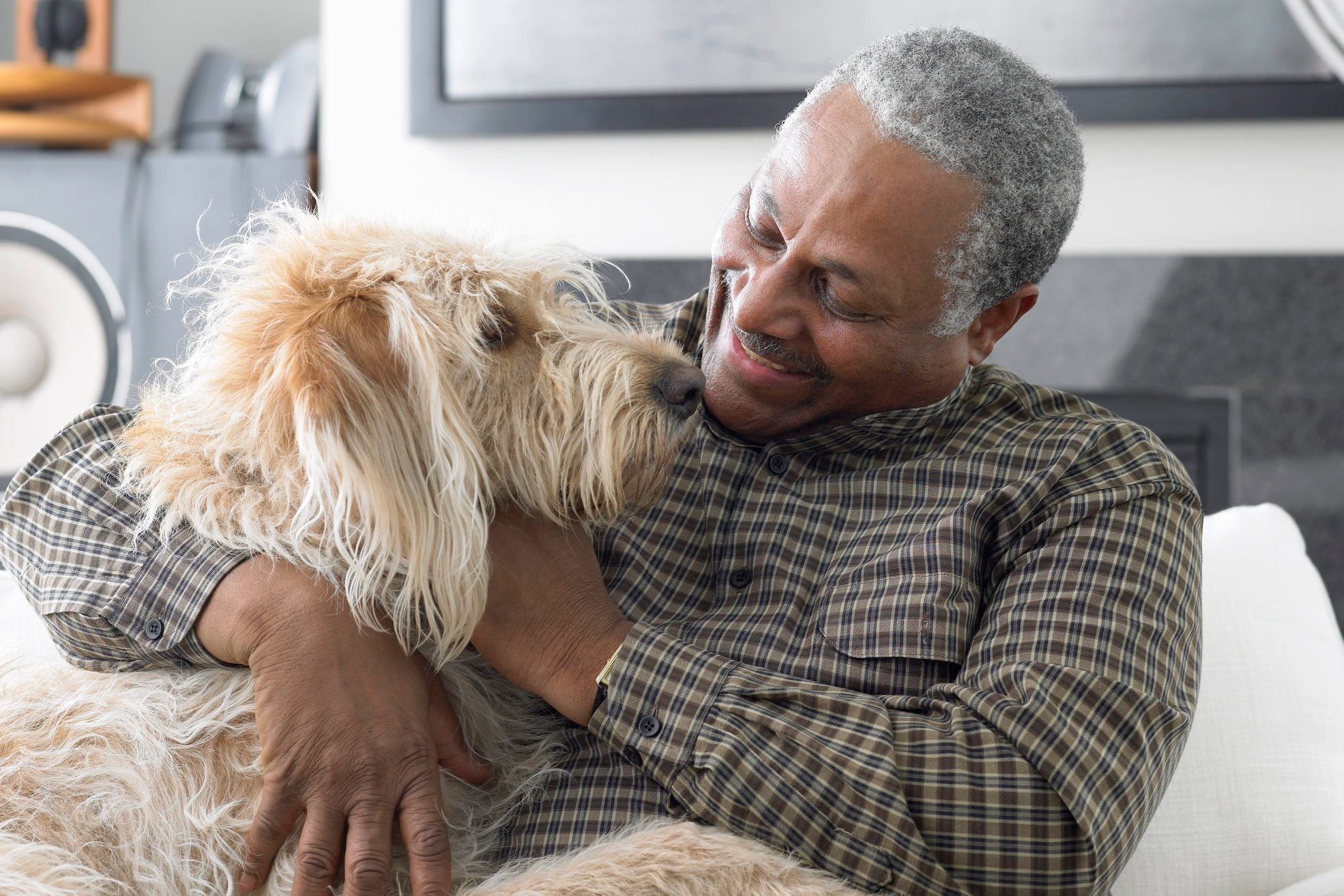Are Dogs Ticklish?
Updated: Feb. 02, 2023

You know when you’ve found just the right spot on your pup. But is your dog actually feeling a tickling sensation or another type of doggy bliss?
The phenomenon of tickling is pretty wild when you think about it. Touch certain sensitive areas of the body and suddenly you’re uncontrollably compelled to giggle and wiggle around. And best of all, it almost always puts you in a good mood (as long as the tickles are welcome, of course). We know that’s true for humans, but what about our furry friends? Are dogs ticklish, too? Turns out, our pups experience something similar—and it’s adorable as heck!
“Dogs have the same nerve endings and sensations in their skin and fur as humans,” notes Dana Varble, DVM, chief veterinary officer for the North American Veterinary Center (NAVC). “The human experience of tickling is influenced by our emotional reaction of teasing, laughing, and enjoyment. Just like us, a dog’s reaction depends on how they were tickled when they were growing up and how sensitive they are. In other words, some dogs are more ticklish than others.”
For the full rundown on how to know how ticklish your dog is, how dogs react to being tickled, and which areas are most ticklish, keep reading. Then find out what it means when a dog licks you.
How do you know if your dog is ticklish?
Dogs can exhibit a wide range of responses when they’re tickled. As is the case with people, these responses are involuntary reactions. “Signs might include jerking around, wiggling, or kicking their leg in the rhythm of the tickle. They might also engage in head tilting and body contorting when you find a ticklish spot,” says Erin Askeland, a certified dog behavior consultant and the resident pet expert for Camp Bow Wow. “This is often referred to as the scratch reflex and is their uncontrolled response to this type of touch.”
Dr. Varble adds that when tickled, some dogs will also flick their ears, shimmy their back, or pull their feet away. Some dogs might even smile a little bit, which presents as a wrinkled nose and bared teeth. Learn more about what your dog’s facial expressions really mean.
Do dogs laugh when they’re tickled?
For humans, tickling often causes us to erupt in a fit of laughter. This doesn’t really occur in dogs since they don’t laugh in the first place. That said, they might exhibit behaviors that are similar to laughing. Askeland says there are a few studies that show a different type of pant or breath observed when a dog is tickled. It might just sound like a change in breathing frequency or intensity, but don’t expect a true giggle.
What areas are most ticklish on dogs?
Every good boy or girl is different when it comes to tickling. That goes for their specific trigger points and their reactions when you touch them. Some dogs are highly sensitive, while some don’t seem affected by any type of tickling pressure.
“Most commonly, you’ll find that dogs may twitch or kick out when the hair between their toes and between the pads of their feet is tickled,” says Askeland. (This would be the equivalent of tickling human feet.) “Also, you can find scratch/tickle spots on the sides of the neck, back, or sometimes the underside of the belly.” Some might also respond to tickles on their nose and ears, and when you rub their hair against the grain.
Do dogs enjoy being tickled?

Many dogs do enjoy light, brief tickle sessions. It can be a way to bond and show your love toward them. That said, just like humans, some dogs aren’t quite so keen when it comes to being tickled. In fact, Dr. Varble says it can make some dogs feel anxious and grumpy.
“If they walk away or get up and move, then they shouldn’t be pursued. If they growl, that is a dog’s way of saying ‘No, please stop!'” says Dr. Varble. “There are also some dogs whose ears, feet, and tummy can be painful or very sensitive, and we would never want to tickle them. What we feel as tickling, they might feel as pain.” The bottom line: You know your doggo best. Pay close attention to their response and react accordingly. While we’re on the subject, here are 13 things your dog wishes you’d stop doing.
How do you tickle a dog?
Tickling is pretty straightforward for our floofy friends. Simply wiggle your fingers lightly on one of the ticklish spots we mentioned. Again, keep it quick and be mindful of their reactions. Even dogs who normally love getting tickled might not be in the mood sometimes.
Also, in the same way you’d only want those closest to you going in for a tickle, dogs generally prefer being tickled by people they trust, and in environments where they feel safe. In other words, it’s not wise to tickle a dog you’ve just met (or only met a few times), and you should engage in a tickle session only if you’re in a familiar setting. Are you giving your fur baby the right amount of TLC? Review these 8 signs you’re not showing your dog enough affection.
Sources:
- Dana Varble, DVM, chief veterinary officer for the North American Veterinary Center
- Erin Askeland, a certified dog behavior consultant and the resident pet expert for Camp Bow Wow



